Below decks – the jazz club
A chief benefit of moving to the custom end of the yacht building scale is the ability to create something unique and personal. It’s one thing to add that bespoke touch to a production yacht, it’s another to create character and soul.
The test boat possesses more character and soul than most other new yachts; the impact on stepping below for the first time was nothing short of arresting.
“The interior is where the owner put his real soul into the boat,” says Conijn. He reportedly wanted to create a jazz club style Cuban atmosphere, a theme well captured by interior designers Wetzels Brown.
The eye is drawn to the red leather panels, the showpiece humidor set into the saloon’s coffee table and the spit-and-sawdust style smoked oak floor. Then you notice the detailing, from the traditional bronze fittings used on all the furniture to the lyrics of the owners’ favourite jazz song stitched into their bedclothes.
This yacht’s interior conjures the old-world atmosphere of cigar smoke and jazz with a clean, contemporary twist.
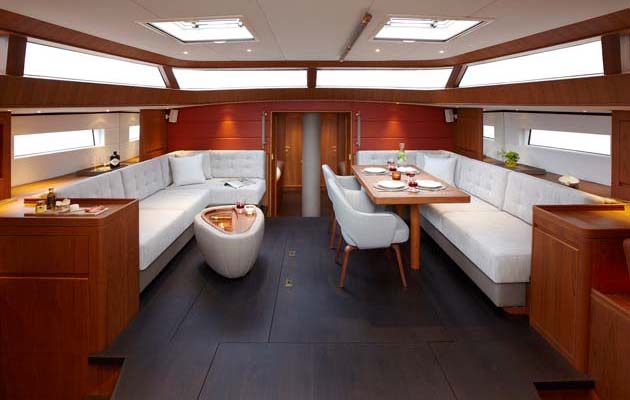
Spend some time below on the 67CS at sea, and there’s another very appealing quality. She is a truly calming yacht.
It’s quiet and peaceful, whether under sail, motor or at anchor. This is down to the aesthetic character of the test boat as well as to the engineering, which is up to superyacht standards.
When we visited Contest’s Medemblik yard last June, we were impressed with how much construction takes place on site. This offers Contest the versatility to cater to most clients’ wishes while ensuring a high standard of structure and engineering in the yachts.
For the 67CS, the company has stepped things up yet another notch. Contest houses all of the 67CS’s machinery in an insulated central box beneath the saloon floor.
The weight of the generator, aircon, hydraulics, batteries etc is centralised, with the tanks located either side. The engine room is located directly aft, also beneath the saloon.
Access to the water separators and fuel filters for the engine and the genset are located beneath the first step down to the galley. The result is refreshingly peaceful.
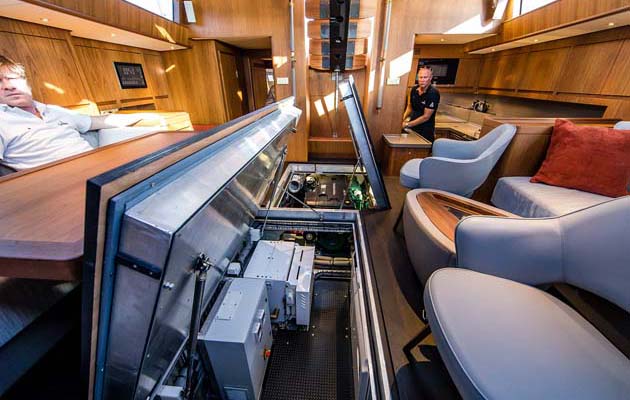
Even when motoring along at 8.5 knots, at a time when you would expect noise and vibration in the aft cabin, there was only the faint rushing noise of cooling water. The electrical components are housed in a central walk-in technical room beneath the cockpit sole.
“What we learnt is that this kind of equipment doesn’t like heat – so we always have a separate electrical room,” Conijn explains. I saw the incredibly complex amount of wiring that leads into here while the yacht was in build.
To have it all intelligently laid out and neatly contained – the switchboards, distribution panels, chargers, inverters etc all in one area – brings peace of mind.
Layout options
A variety of different layout options are available, including the option to have a fore or aft owner’s cabin. The test boat was built with an aft master cabin, and it’s easy to see the appeal of this configuration.
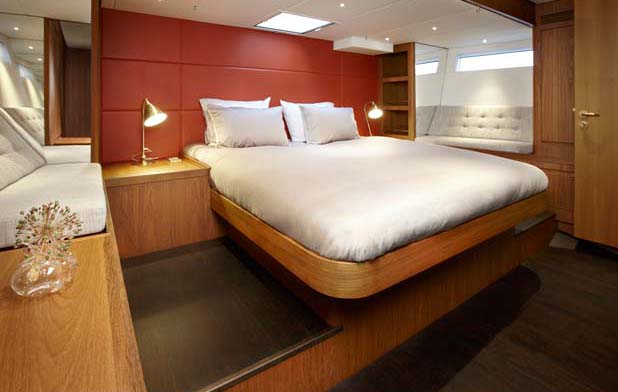
There is 7ft headroom surrounding the island berth and an escape hatch above, abundant hanging stowage in the lockers furnishing the passageway forward, and with the yacht heeling, I was able to gaze at the horizon through the hull window from one of the two forward-facing sofas. And again, I noted the calm nature of the boat.
On the test boat, the two en-suite guest cabins forward of the saloon are near identical, containing compact double berths with leecloths and tall wardrobes. The entrances are tight (particularly to port) and there are no hull windows, but the cabins are certainly comfortable and the hatches above let in natural light.
The Pullman crew cabin in the forepeak can be accessed through the interior via the shower of the port-side guest cabin, but has its own private deck hatch too. Most of the layout options include this forepeak crew cabin, apart from the three-guest-cabin version, which has a passageway style galley and a Pullman for the crew located near the companionway – a position occupied by the day heads on the test boat.
The U-shape galley has practical stowage space, particularly in the surrounding raised lockers. However it is the one area of the boat where storage allocation was not overly generous (ocean sailors may wish to address that at build stage), although there are useful lockers in the sole and below the sofas too for extra provisions.
The navstation is the ideal size and location, with a comfortable angled seat that has an armrest to help you wedge yourself in on either tack. A plotter and instruments are mounted on a raised panel, within touchscreen reach of the seated position.
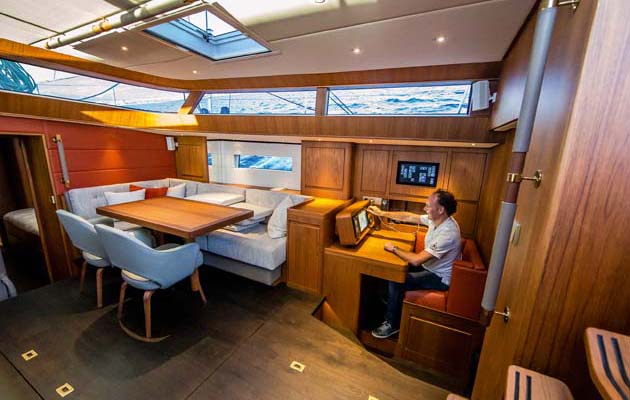
Verdict: In search of heart and soul
I’ve seen the Contest sailing in zephyrs and I’ve sailed her in wind strengths up to 30 knots. Built to cater for the growing number of Contest clients that like to sail in the Med, this mid-displacement cruiser certainly feels alive in the lighter breeze.
This has clear appeal for a luxury cruiser – the slipperiness and sail area to avoid motoring whenever possible combined with a practical set-up to for reducing canvas when needed. She also has a kindly motion in waves.
Yet here’s the surprise twist: despite a full day of near perfect sailing conditions, it wasn’t the performance of the 67CS that stayed with me – it was the quality and real character of the interior. Giving owners too many bespoke interior choices can result in something quirky that might be difficult to sell at a later date. Contest allows for that nice balance of owner input, which, In this instance, has created a yacht with soul and identity.
The credit for creating this character goes to the owner and interior design team, but it is the quality of engineering and construction at the yard that makes the boat so tranquil. The amount of machinery and systems involved on this size of boat can be daunting.
Contest’s practical, methodical approach is of superyacht standard and ensures owners have the ability to fault-find and maintain the boat easily. In terms of quality, the 67CS is perhaps the most impressive new yacht under 80ft in production today.
Specifications
LOA: 20.30m (66ft 7in)
LWL: 18.50m (60ft 8in)
Beam (Max): 5.65m (18ft 6in)
Draught: 2.95m (9ft 8in)
Disp (lightship): 39,500kg (87,082lb)
Ballast: 12,800kg (28,219lb)
Sail Area (100% foretriangle): 237.7m2 (2,559ft2)
Berths: 6–8
Engine: 180hp Volvo Penta
Water: 988lt (217gal)
Fuel: 1,590lt (350gal)
Sail Area:Displacement ratio: 20.8
Displacement:LWL ratio: 174
Price (ex VAT): €2,598,000
Design: Judel/Vrolijk & Wetzels Brown Partners

Contest 67CS , Designed by Judel&Vrolijk. Palma de Mallorca
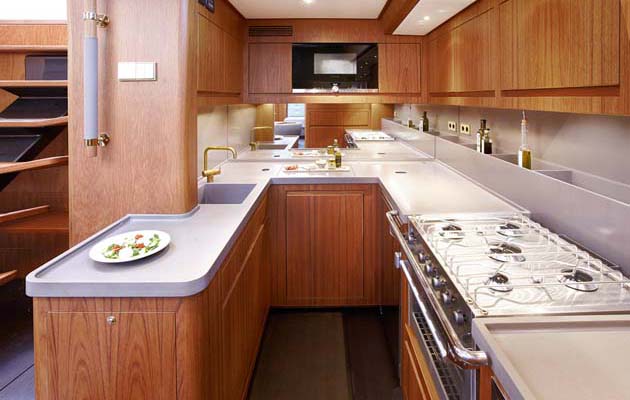

Contest 67CS , Designed by Judel&Vrolijk. Palma de Mallorca





